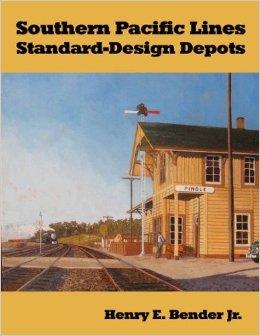By Janet McGovern
More than 30 years ago, Henry E. Bender, Jr. began researching the history of Southern Pacific depots, buildings integral to the development of hundreds of communities across California, including along the San Francisco Peninsula. Recently released by Signature Press, Bender’s book Southern Pacific Lines Standard-Design Depots is packed with photographs, architectural drawings and text telling the story of depots that were often the centers of town. Using a set of 26 different standard designs, Southern Pacific planted depots throughout the state and the West -- from one-story, no-frills structures to two-story depots with a home upstairs for the station agent and his family.
“What I wanted to accomplish was to document the subject fairly thoroughly,” the San Jose resident explained. “There had been some books published that were basically picture books with some limited description but these books didn’t go into details like what the depot dimensions were, when they were abandoned and so on.” Bender has maintained an interest in railroads through a career spent as a mechanical engineer, a corporate librarian and a technical writer. Looking in 1981 for a railroad book niche that hadn’t been tapped out, he focused on depots.
Bender’s relentless quest for accurate documentation sent him searching libraries, old newspapers and magazines and interviewing former SP employees, all the while fact-checking with a network of fellow railroad enthusiasts. A Mother Lode of information came from the research Bender was allowed to do in the SP department that kept track of the value of virtually everything the railroad owned. That’s how he was able to accurately document changes, such as the installation of a toilet structure, a depot fire or the date when a freight house had been “retired.”
Although 80 to 90 percent of the original SP depots are gone, some replaced by newer ones, the book documents what they were like and what happened to them. The first Colonnade-style depot was Palo Alto’s (1896) but it was replaced in 1941. Millbrae boasts the only existing two-story depot with that architectural style, with columns. After so many years of research, Bender says it is a great feeling to receive feedback. And his next book? What else? “Some people have suggested the non-standard-design depots, of which there are a lot,” Bender said. “I think that would be a good addition.”

